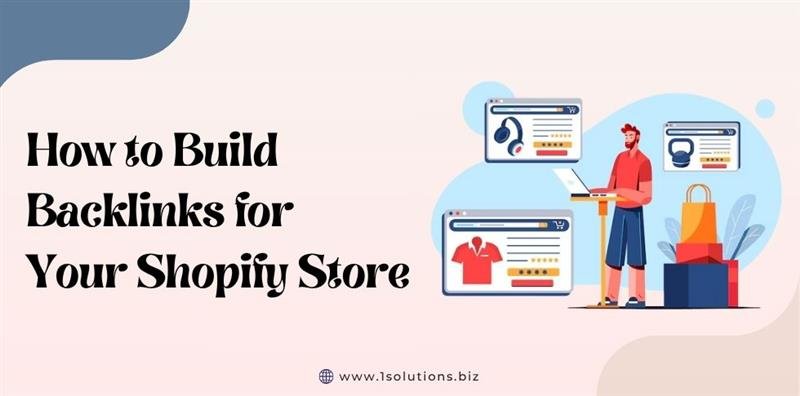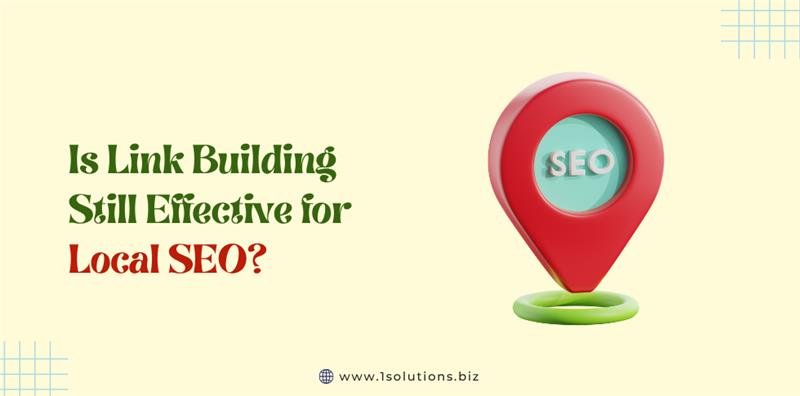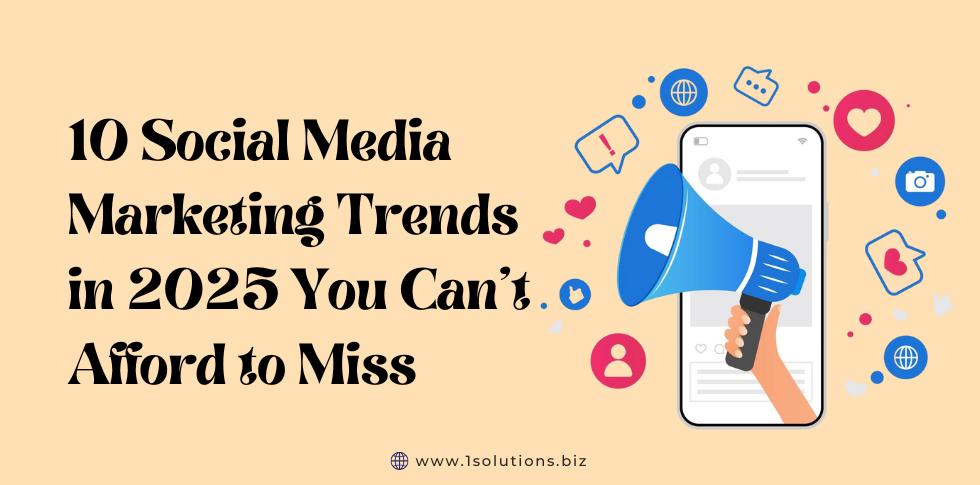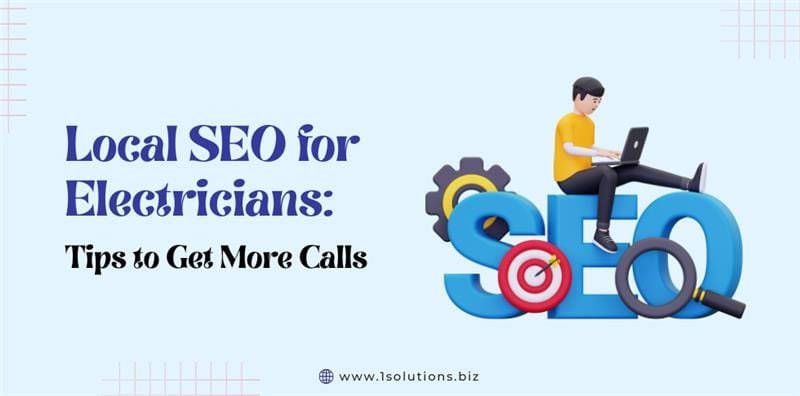In the competitive world of eCommerce, standing out online is a challenge every Shopify store owner faces. With millions of stores vying for attention, how do you ensure your business ranks higher on Google, attracts more traffic, and converts visitors into loyal customers?
The answer lies in backlinks—a critical component of eCommerce SEO services that can skyrocket your Shopify store’s visibility and authority.
Backlinks are more than just links; they’re votes of confidence from other websites that tell search engines your store is trustworthy and relevant.
For Shopify store owners, mastering link building for Shopify stores is a game-changer. In this in-depth guide, we’ll explore why backlinks matter, uncover proven strategies to build them, and reveal Shopify-specific tactics to give your store an edge.
Whether you’re a small business owner or a seasoned digital marketer, this article will equip you with actionable insights to boost your Shopify SEO.
Why Backlink Building is Crucial for Shopify Stores?
In the fiercely competitive world of eCommerce, where millions of Shopify stores vie for customer attention, link building services stands out as a pivotal strategy for success.
Backlinks—links from external websites pointing to your Shopify store—are more than just digital connections; they’re endorsements that elevate your store’s visibility, credibility, and profitability. For Shopify store owners, mastering link building for Shopify stores is not optional—it’s essential to stand out in search engine results, attract targeted traffic, and drive sales.
Below, we explore six compelling reasons why backlink building is crucial for your Shopify store, tailored to the unique challenges and opportunities of the platform.
1. Boost Organic Search Rankings
Backlinks are a cornerstone of search engine optimization (SEO), acting as votes of confidence that signal to Google your Shopify store is trustworthy and relevant. The more high-quality backlinks you have, the higher your store is likely to rank for competitive keywords like “sustainable fashion” or “handmade pet accessories.”
Why It Matters
- Google’s Algorithm: Google’s ranking factors heavily weigh backlinks, especially those from authoritative sites (e.g., DA 40+).
- Shopify Competition: With over 1 million Shopify stores globally, strong rankings are critical to outshine competitors.
- Long-Term Impact: Higher rankings lead to sustained organic traffic, reducing reliance on paid ads.
Example
A Shopify store selling eco-friendly kitchenware earns backlinks from 10 green living blogs, helping it rank on page one for “biodegradable kitchen tools,” driving 500 monthly organic visitors.
Pro Tip
Focus on links from niche-relevant sites to maximize ranking boosts for your target keywords.
Also Read- 10 Traffic Driving Strategies for Your Shopify Store
2. Drive Targeted Referral Traffic
Backlinks from relevant websites don’t just improve SEO—they bring visitors directly to your Shopify store. When a trusted blog or influencer links to your product page, their audience is more likely to click through, explore your store, and make a purchase.
Why It Matters
- Qualified Visitors: Referral traffic from niche sites (e.g., a fitness blog linking to your yoga gear) is highly targeted, increasing conversion rates.
- Brand Exposure: Links from popular sites introduce your store to new audiences, expanding your customer base.
- Shopify Advantage: Shopify’s user-friendly interface ensures referral visitors have a seamless shopping experience.
Example
A Shopify store selling artisanal coffee gets featured in a “Top 10 Coffee Brands” roundup on a food blog, driving 300 visitors in a week, 15% of whom purchase a subscription.
Pro Tip
Track referral traffic in Google Analytics (Acquisition > Referrals) to identify which backlinks drive the most visits and conversions.
3. Enhance Domain Authority
Domain authority (DA) is a metric (scored 0–100) that predicts how well a website will rank on search engines. Backlinks from high-DA sites, such as industry publications or established blogs, significantly boost your Shopify store’s DA, making it easier to rank for a wide range of keywords.
Why It Matters
- SEO Foundation: Higher DA strengthens your store’s overall ranking potential, even for new pages.
- Competitive Edge: Many Shopify stores have low DA due to limited link-building efforts, giving you an advantage.
- Trust Signal: A higher DA enhances your store’s credibility with both search engines and customers.
Example
A Shopify store selling skincare products earns a backlink from a beauty magazine (DA 70), increasing its DA from 20 to 35, improving rankings for multiple product categories.
Pro Tip
Use Moz or Ahrefs to monitor your DA monthly and target links from sites with DA 10+ points higher than yours.
4. Outpace Competitors
In the crowded eCommerce landscape, backlink building is a differentiator that sets your Shopify store apart. Many competitors rely solely on Shopify’s built-in SEO features or paid ads, neglecting off-site strategies like link building. By proactively earning backlinks, you gain a significant edge.
Why It Matters
- Market Share: Higher rankings and traffic steal customers from competitors.
- Niche Dominance: Backlinks from authoritative sites position your store as a leader in your industry.
- Cost Efficiency: Organic traffic from backlinks reduces dependency on expensive ad campaigns.
Example
Two Shopify stores sell similar fitness apparel. The one with 20 high-quality backlinks from fitness blogs ranks higher and attracts 70% more organic traffic than its competitor with no link-building strategy.
Pro Tip
Use Ahrefs’ Site Explorer to analyze competitors’ backlinks and target similar or better link opportunities.
5. Build Brand Credibility and Trust
Backlinks from reputable websites act as endorsements, signaling to customers that your Shopify store is legitimate and trustworthy. This is especially crucial for new or small stores competing against established brands.
Why It Matters
- Customer Confidence: Links from trusted sources (e.g., media outlets, influencers) reassure shoppers, increasing conversions.
- Industry Recognition: Being featured on authoritative sites positions your store as a go-to resource in your niche.
- Social Proof: Backlinks amplify your brand’s visibility, encouraging word-of-mouth and repeat purchases.
Example
A Shopify store selling organic pet food earns a backlink from a veterinary blog, boosting its credibility and leading to a 20% increase in first-time customer orders.
Pro Tip
Showcase notable backlinks (e.g., “As seen in [Publication]”) on your Shopify store’s homepage to enhance trust.
6. Drive Direct Sales and Conversions
Ultimately, backlinks are about growing your bottom line. By directing targeted traffic to specific product pages or collections, backlinks can lead to immediate sales and long-term customer relationships.
Why It Matters
- High Conversion Rates: Visitors from relevant backlinks are more likely to buy, as they’re already interested in your niche.
- Product-Specific Links: Links to product pages or collections (e.g., “summer dresses”) drive action-oriented traffic.
- Scalable Growth: Consistent link-building compounds traffic and sales over time.
Example
A Shopify store selling handmade jewelry gets a backlink to its “birthstone necklaces” collection from a gift guide blog, resulting in 50 sales during the holiday season.
Pro Tip
Optimize linked pages with clear calls-to-action (e.g., “Shop Now”) and fast-loading designs to maximize conversions.
Backlink building is a game-changer for Shopify stores, offering a multifaceted approach to improving rankings, traffic, authority, and sales. By prioritizing eCommerce SEO backlinks, you’ll not only compete but thrive in the crowded online marketplace. Next, let’s dive into proven strategies to start building those links effectively.
Top White-Hat Strategies for Building Backlinks
White-hat link building is the gold standard for creating a sustainable, ethical backlink profile that aligns with Google’s guidelines. These strategies prioritize quality over quantity, ensuring your Shopify store earns links from reputable, relevant websites.
Below, we dive into five proven white-hat methods—guest blogging, HARO, influencer collaboration, broken link building, and digital PR—each tailored to help your eCommerce business thrive. Let’s explore how to implement these Shopify backlink strategies effectively.
1. Guest Blogging
Guest blogging involves writing high-quality articles for authoritative websites in your niche, with a backlink to your Shopify store included in the content or author bio. This strategy not only drives referral traffic but also boosts your domain authority by associating your brand with trusted platforms.
Why It Works for Shopify Stores
- Niche Relevance: Guest posts on blogs related to your products (e.g., fitness, fashion, or home decor) attract targeted audiences.
- Brand Exposure: Showcasing your expertise builds trust and encourages readers to visit your store.
- SEO Boost: Links from high-authority sites signal credibility to search engines.
How to Get Started
- Identify Target Blogs: Use tools like Ahrefs or Moz to find blogs with a domain authority (DA) of 30+ in your niche. For example, if you sell sustainable clothing, search for eco-friendly or fashion blogs.
- Craft a Compelling Pitch: Personalize your outreach email, highlighting your expertise and proposing a unique topic. Example: “I’d love to write about ‘5 Ways to Style Sustainable Fashion’ for your audience.”
- Write Exceptional Content: Create a 1000–1500-word article packed with value, visuals, and actionable tips. Include a natural backlink to a relevant page, such as a product category or blog post.
- Optimize Anchor Text: Use descriptive, non-spammy anchor text like “sustainable Shopify clothing store” instead of generic phrases like “click here.”
Pro Tips
- Focus on quality over quantity—aim for 2–3 guest posts on high-DA sites rather than dozens on low-quality blogs.
- Follow the blog’s guidelines to increase acceptance rates.
- Repurpose your guest post as a blog on your Shopify store, linking back to the original for additional SEO value.
Example
If you sell pet supplies, pitch a guest post to a pet care blog like “The Ultimate Guide to Choosing Eco-Friendly Pet Toys.” Include a link to your Shopify store’s eco-friendly toy collection in the article.
2. HARO (Help a Reporter Out)
HARO connects journalists with industry experts, offering a golden opportunity to earn backlinks from high-authority news sites. By providing valuable insights for articles, you can secure links to your Shopify store from outlets like Forbes, Entrepreneur, or niche publications.
Why It Works for Shopify Stores
- High-DA Links: Media sites often have DA scores of 70+, making their backlinks incredibly valuable.
- Brand Credibility: Being quoted as an expert enhances your store’s reputation.
- Scalable Opportunities: HARO sends daily queries, providing consistent chances to pitch.
How to Get Started
- Sign Up for HARO: Create a free account at helpareporter.com and select categories relevant to your niche (e.g., eCommerce, retail, or lifestyle).
- Monitor Queries: Check HARO’s thrice-daily emails for journalist requests that match your expertise. For example, respond to a query like “Seeking eCommerce owners for tips on holiday sales.”
- Craft a Concise Pitch: Provide a clear, expert-driven response (200–300 words) with your credentials and a link to your Shopify store. Example: “As a Shopify store owner specializing in handmade jewelry, I recommend [tip]. Learn more at [your store URL].”
- Follow Up Politely: If your pitch is selected, thank the journalist and share the published article on your social media or Shopify blog.
Pro Tips
- Respond quickly—journalists often work on tight deadlines.
- Tailor your pitch to the query’s specific needs to stand out.
- Use a professional email signature with your store’s URL to reinforce your brand.
Example
A journalist requests “eCommerce trends for 2025.” As a Shopify owner selling tech gadgets, you share insights on AI-driven shopping experiences, earning a backlink from a tech news site to your store’s homepage.
3. Influencer Collaboration: Leverage Trust and Reach
Partnering with influencers—bloggers, YouTubers, or Instagram creators—can yield backlinks from their platforms while tapping into their engaged audiences. Influencers often include links in blog posts, video descriptions, or social bios when reviewing or featuring your products.
Why It Works for Shopify Stores
- Targeted Traffic: Influencers in your niche drive visitors who are likely to convert.
- Trust Factor: Their endorsements lend credibility to your brand.
- Content Amplification: Influencer content often gets shared, increasing your link’s visibility.
How to Get Started
- Find Relevant Influencers: Use tools like BuzzSumo or HypeAuditor to identify influencers with 10K–100K followers in your niche. For example, a beauty influencer for a skincare Shopify store.
- Reach Out Thoughtfully: Send a personalized email or DM offering a free product or collaboration. Example: “Hi [Influencer], I love your content on natural skincare! I’d like to send you our organic face serum for a review.”
- Negotiate Backlinks: Request a link to your Shopify store in their blog post, video description, or bio. Offer to provide unique content, like a discount code for their audience.
- Track Engagement: Monitor referral traffic and sales from the influencer’s link using Google Analytics.
Pro Tips
- Prioritize micro-influencers (10K–50K followers) for higher engagement and affordability.
- Build long-term relationships for recurring backlink opportunities.
- Ensure the influencer’s audience aligns with your target market to maximize ROI.
Example
A fitness influencer reviews your Shopify store’s yoga mats on their blog, linking to your product page. Their post drives 500 visitors, 10% of whom make a purchase.
4. Broken Link Building: Turn Dead Links into Opportunities
Broken link building involves finding broken (404) links on relevant websites and offering your Shopify store’s content as a replacement. This win-win strategy helps site owners fix their pages while earning you a valuable backlink.
Why It Works for Shopify Stores
- Low Competition: Many Shopify owners overlook this tactic, giving you an edge.
- High Relevance: You can target sites closely related to your products.
- Ethical Approach: You’re providing value by fixing broken links.
How to Get Started
- Find Broken Links: Use the Check My Links Chrome extension or Ahrefs’ Site Explorer to identify dead links on blogs, resource pages, or industry sites. Search for pages like “Best Shopify Stores” or “Top Pet Products.”
- Create Replacement Content: Develop a high-quality page on your Shopify store that matches the broken link’s topic. For example, if a blog links to a dead “gift guide” page, create your own gift guide.
- Reach Out to Site Owners: Email the webmaster with a polite suggestion. Example: “Hi [Name], I noticed a broken link on your [page URL] to [dead URL]. My Shopify store has a similar resource at [your URL] that could replace it.”
- Follow Up: If you don’t hear back, send a gentle reminder after a week.
Pro Tips
- Target sites with DA 20+ for maximum SEO impact.
- Ensure your replacement content is superior to the original to increase acceptance.
- Use a spreadsheet to track outreach and responses for efficiency.
Example
A home decor blog has a broken link to a “best throw blankets” article. You offer your Shopify store’s “Top 10 Cozy Blankets for Winter” page as a replacement, earning a backlink.
5. Digital PR: Tell Your Brand’s Story
Digital PR leverages press releases, interviews, or unique campaigns to earn backlinks from media outlets, blogs, and industry publications. By showcasing your Shopify store’s story—whether it’s a new product launch, a charity initiative, or a sustainability effort—you can attract attention and links.
Why It Works for Shopify Stores
- Massive Reach: Media coverage exposes your brand to large audiences.
- Authority Links: News sites and magazines often have high DA, amplifying your SEO.
- Brand Storytelling: PR builds emotional connections with customers.
How to Get Started
- Identify a Newsworthy Angle: Highlight what makes your Shopify store unique. Examples: “Local Shopify Store Donates 10% of Profits to Animal Shelters” or “New Eco-Friendly Product Line Launched.”
- Craft a Press Release: Write a 300–500-word release with a compelling headline, key details, and a link to your store. Use platforms like PRWeb or PR Newswire to distribute it.
- Pitch to Journalists: Reach out to local or niche journalists via email or Twitter. Example: “Hi [Journalist], I thought your readers might be interested in our Shopify store’s new sustainable packaging initiative.”
- Leverage Campaigns: Create linkable assets like infographics, studies, or giveaways to attract coverage. For instance, a “State of eCommerce 2025” report could earn links from industry blogs.
Pro Tips
- Focus on local media for easier wins, especially if you’re a small business.
- Use HARO alongside PR for additional media opportunities.
- Share published articles on your Shopify blog and social media to amplify reach.
Example
Your Shopify store launches a biodegradable packaging line. A press release earns coverage from a green living magazine, linking to your store’s sustainability page and driving 1000+ visitors.
These white-hat strategies are powerful tools for building eCommerce SEO backlinks. By combining them with Shopify-specific tactics (covered later), you’ll create a robust link profile that boosts your store’s rankings, traffic, and sales. Next, let’s explore how to leverage Shopify’s ecosystem for even more link-building opportunities.
Common Mistakes to Avoid in Shopify Link Building
Building backlinks for your Shopify store is a powerful way to boost eCommerce SEO backlinks and drive traffic, but missteps can undermine your efforts or even harm your rankings.
Many Shopify store owners, especially those new to link building, fall into traps that waste time, resources, or trigger Google penalties. Below, we outline six common mistakes to avoid when implementing Shopify backlink strategies, along with practical tips to stay on the right path.
By steering clear of these pitfalls, you’ll ensure your link-building efforts are ethical, effective, and aligned with long-term success.
1. Buying Spammy or Low-Quality Links
One of the most dangerous mistakes is purchasing backlinks from low-quality or spammy websites, such as link farms or private blog networks (PBNs). These links often come cheap and promise quick results, but they can lead to severe Google penalties, including deindexing your Shopify store.
Why It’s a Problem
- Google Penalties: Google’s algorithms, like Penguin, detect unnatural link patterns and penalize sites with spammy backlinks.
- Low SEO Value: Links from irrelevant or low-authority sites (e.g., DA < 20) offer little to no ranking benefit.
- Brand Damage: Association with shady sites can erode customer trust.
How to Avoid It
- Prioritize Quality: Focus on earning links from reputable, high-authority sites (DA 30+) relevant to your niche, such as industry blogs or media outlets.
- Vet Sources: Use tools like Ahrefs or Moz to check a site’s domain authority, spam score, and relevance before pursuing a link.
- Stay Ethical: Rely on white-hat strategies like guest blogging or HARO, which build sustainable links.
Example
A Shopify store selling fitness gear buys 100 links from a PBN for $50, only to see its rankings plummet after a Google update. Instead, earning a single link from a fitness blog via a guest post would have been safer and more impactful.
Pro Tip
If you suspect toxic links, use Google’s Disavow Tool to reject them, but consult an SEO expert to avoid mistakes.
2. Over-Optimizing Anchor Text
Anchor text—the clickable text of a hyperlink—plays a role in SEO, but over-optimizing it with exact-match keywords (e.g., “buy running shoes online”) looks manipulative to search engines and can trigger penalties.
Why It’s a Problem
- Unnatural Appearance: Repeated use of exact-match anchors signals spam to Google, risking a penalty.
- Missed Opportunities: Over-focusing on keywords limits the use of branded or natural anchors (e.g., “our Shopify store”), which diversify your profile.
- Reduced Relevance: Keyword-heavy anchors may not align with the linking page’s context.
How to Avoid It
- Diversify Anchor Text: Use a mix of branded (e.g., “EcoFit Apparel”), generic (e.g., “learn more”), and partial-match (e.g., “sustainable fitness clothing”) anchors.
- Keep It Natural: Ensure anchor text flows naturally within the content. For example, “Check out EcoFit Apparel’s sustainable clothing line” is better than “Buy sustainable clothing.”
- Monitor with Tools: Use Ahrefs or Semrush to analyze your anchor text distribution and maintain a balanced profile.
Example
A Shopify store selling coffee machines uses “best espresso machine” as the anchor for 80% of its backlinks, triggering a Google penalty. A varied approach with anchors like “BrewMaster Coffee” and “coffee brewing tips” would have been safer.
Pro Tip
Aim for a 60-20-20 anchor text ratio: 60% branded, 20% generic, and 20% keyword-related for a natural profile.
3. Ignoring Link Relevance
Pursuing backlinks from websites unrelated to your Shopify store’s niche (e.g., a tech blog linking to a pet store) dilutes your SEO efforts and confuses search engines about your site’s authority.
Why It’s a Problem
- Reduced SEO Impact: Irrelevant links carry less weight in Google’s ranking algorithm.
- Poor User Experience: Referral traffic from unrelated sites is less likely to convert, as visitors aren’t your target audience.
- Wasted Effort: Time spent on irrelevant links could be better used on niche-specific opportunities.
How to Avoid It
- Target Niche Sites: Seek links from blogs, forums, or directories related to your products. For example, a skincare Shopify store should target beauty or wellness blogs.
- Check Topical Alignment: Use Ahrefs’ Content Explorer to find sites covering topics similar to your store’s niche.
- Leverage Shopify Context: Pursue links from eCommerce-focused platforms, like Shopify’s partner directories or app marketplaces.
Example
A Shopify store selling yoga mats earns a link from a car repair blog, driving zero conversions. A link from a yoga lifestyle blog, however, brings 200 targeted visitors, 10% of whom purchase.
Pro Tip
Create a “link target list” of 20–30 niche-relevant sites to streamline your outreach efforts.
4. Neglecting Personalized Outreach
Sending generic, impersonal outreach emails (e.g., “Hi Webmaster, please link to my site”) for guest posts, influencer collaborations, or link placements often results in low response rates and missed opportunities.
Why It’s a Problem
- Low Success Rate: Site owners ignore or delete mass emails that lack personalization.
- Missed Relationships: Generic outreach fails to build long-term partnerships with bloggers or influencers.
- Reputation Risk: Spammy outreach can harm your brand’s credibility.
How to Avoid It
- Personalize Emails: Address recipients by name, reference their content, and explain why your link adds value. Example: “Hi Sarah, I loved your post on eco-friendly fashion! My Shopify store’s sustainable clothing guide could complement it.”
- Use Tools: Leverage Hunter.io to find accurate email addresses and BuzzSumo to research a site’s content for tailored pitches.
- Follow Up: Send a polite follow-up email after 5–7 days if you don’t hear back.
Example
A Shopify store owner sends 100 generic outreach emails for guest posts, getting zero responses. A personalized pitch to 10 fitness bloggers, referencing their recent posts, secures three guest post opportunities with backlinks.
Pro Tip
Use a CRM like HubSpot to organize outreach and track responses for efficiency.
5. Failing to Monitor Backlinks
Not regularly checking your backlink profile can allow toxic or broken links to harm your SEO without your knowledge. Unmonitored links may also lose value if the linking site’s authority drops or the link is removed.
Why It’s a Problem
- Toxic Links: Spammy or irrelevant links can trigger penalties or lower your domain authority.
- Lost Opportunities: Removed or broken links reduce your SEO benefits without you noticing.
- Missed Insights: Without monitoring, you can’t identify which links drive traffic or rankings.
How to Avoid It
- Use Monitoring Tools: Track your backlink profile with Ahrefs, Moz, or Google Search Console to spot new, lost, or toxic links.
- Conduct Regular Audits: Perform a quarterly backlink audit to identify and disavow harmful links using Google’s Disavow Tool.
- Set Alerts: Configure Ahrefs or Semrush to notify you of new or lost backlinks in real-time.
Example
A Shopify store ignores its backlink profile for a year, unaware that 10 spammy links from a hacked site are hurting its rankings. A quick audit and disavow restore its SEO health.
Pro Tip
Schedule a 30-minute monthly backlink review to stay proactive.
6. Expecting Instant Results
Link building is a long-term strategy, yet many Shopify owners expect immediate ranking boosts or traffic surges after earning a few backlinks. This unrealistic expectation can lead to frustration or abandoning effective tactics.
Why It’s a Problem
- SEO Lag: Google takes weeks or months to crawl and index new backlinks, delaying visible results.
- Cumulative Effect: Backlinks build authority gradually, requiring consistent effort.
- Resource Misallocation: Giving up too soon shifts focus from proven strategies to risky shortcuts.
How to Avoid It
- Set Realistic Goals: Aim for 5–10 high-quality backlinks per quarter, focusing on steady progress.
- Track Early Indicators: Monitor referral traffic and domain authority growth using Google Analytics and Ahrefs, even before rankings improve.
- Stay Consistent: Commit to a 6–12-month link-building plan, combining strategies like guest blogging and digital PR.
Example
A Shopify store owner stops link building after two months, seeing no ranking changes. Had they continued earning links from relevant blogs, their store would have ranked for “organic pet treats” within six months.
Pro Tip
Celebrate small wins, like a new high-DA link or a spike in referral traffic, to stay motivated.
By avoiding these common mistakes, you’ll build a robust, ethical backlink profile that enhances your Shopify store’s link building for Shopify stores efforts. Focus on quality, relevance, and persistence to achieve sustainable SEO success.
How to Track and Measure Backlink Performance
Building backlinks for your Shopify store is only half the battle—tracking and measuring their performance is crucial to ensure your efforts drive tangible results. Without proper monitoring, you’re flying blind, unable to assess which Shopify backlink strategies are boosting your rankings, traffic, or sales.
This section dives into the tools, metrics, and processes you need to evaluate your backlink profile effectively. By understanding how to measure success, you can refine your approach, eliminate ineffective tactics, and maximize your eCommerce SEO backlinks for long-term growth.
Why Tracking Backlink Performance Matters
Backlinks are an investment of time, resources, and sometimes money. Tracking their performance helps you:
- Validate Efforts: Confirm that your links are from high-quality, relevant sites that enhance your domain authority.
- Measure Impact: Quantify how backlinks contribute to organic traffic, keyword rankings, and conversions.
- Identify Issues: Spot toxic or low-value links that could harm your Shopify store’s SEO.
- Optimize Strategy: Focus on the tactics (e.g., guest blogging or digital PR) delivering the best ROI.
Let’s explore the step-by-step process to track and measure backlink performance, including the best tools, key metrics, and actionable insights.
Step 1: Use the Right Tools for Backlink Monitoring
Several tools provide deep insights into your backlink profile, helping you track quantity, quality, and impact. Here’s a breakdown of the most effective ones for Shopify store owners:
Google Analytics
- Purpose: Tracks referral traffic from backlinks to your Shopify store.
- How to Use:
- Navigate to Acquisition > All Traffic > Referrals in Google Analytics.
- Identify which external sites are sending traffic and assess the volume, bounce rate, and session duration.
- Set up goals (e.g., product purchases) to measure conversions from referral traffic.
- Why It’s Useful: Free and easy to integrate with Shopify, it shows how backlinks drive real visitors and sales.
- Cost: Free.
Google Search Console
- Purpose: Monitors which sites link to your Shopify store and their impact on search performance.
- How to Use:
- Go to Links > External Links to see a list of domains linking to your site.
- Check the Top Linked Pages report to identify which product or blog pages attract the most links.
- Cross-reference with the Performance report to see if backlinks correlate with improved keyword rankings.
- Why It’s Useful: Provides Google’s direct perspective on your backlink profile, helping you spot authoritative links.
- Cost: Free.
Ahrefs
- Purpose: Offers in-depth backlink analysis, including domain authority, anchor text, and link growth trends.
- How to Use:
- Enter your Shopify store’s URL in Site Explorer to view total backlinks, referring domains, and DA.
- Use the Backlinks report to assess link quality (e.g., DA of linking sites, relevance).
- Monitor new and lost links in the Link Growth dashboard to track campaign progress.
- Why It’s Useful: Comprehensive insights help you evaluate link quality and competitor strategies.
- Cost: Starts at $99/month (limited free version available).
Moz Link Explorer
- Purpose: Tracks domain authority, spam score, and backlink growth.
- How to Use:
- Input your store’s URL to see DA, number of backlinks, and top linking domains.
- Check the Spam Score to identify potentially harmful links that need disavowing.
- Use the Link Intersect tool to find sites linking to competitors but not you.
- Why It’s Useful: User-friendly interface and reliable DA metrics make it ideal for beginners.
- Cost: Free limited version; paid plans start at $99/month.
Semrush
- Purpose: Combines backlink analysis with keyword tracking and competitor insights.
- How to Use:
- Use the Backlink Analytics tool to view your total backlinks, referring domains, and link types (e.g., follow vs. nofollow).
- Analyze the Authority Score of linking sites to prioritize high-quality links.
- Leverage the Backlink Audit tool to identify toxic links and submit them to Google’s Disavow Tool.
- Why It’s Useful: Integrates backlink data with broader SEO metrics for a holistic view.
- Cost: Starts at $119/month (limited free version available).
Pro Tip: Combine free tools (Google Analytics, Search Console) with one premium tool (Ahrefs, Moz, or Semrush) for a cost-effective yet comprehensive approach. For small Shopify stores, start with free tools and upgrade as your link-building efforts scale.
Step 2: Focus on Key Metrics
To measure backlink performance, track these five critical metrics, each tied to your Shopify store’s SEO and business goals:
- Number of Referring Domains:
- What It Means: The total number of unique websites linking to your store.
- Why It Matters: More referring domains signal a diverse, authoritative backlink profile.
- How to Track: Use Ahrefs or Moz to monitor growth over time (e.g., aim for 5–10 new domains per month).
- Example: If a pet supplies store gains links from 20 unique pet blogs, it’s more impactful than 20 links from one blog.
- Domain Authority (DA) of Linking Sites:
- What It Means: A score (1–100) indicating the credibility of sites linking to you.
- Why It Matters: High-DA links (DA 30+) from relevant sites boost your rankings more than low-DA links.
- How to Track: Check DA in Ahrefs or Moz for each linking domain.
- Example: A backlink from a DA 60 fitness blog is more valuable than a DA 10 directory for a sports apparel store.
- Referral Traffic:
- What It Means: The number of visitors arriving at your Shopify store via backlinks.
- Why It Matters: Quality links drive targeted traffic, increasing the likelihood of conversions.
- How to Track: Monitor referral sources in Google Analytics and assess metrics like time on site and conversion rate.
- Example: A guest post on a parenting blog sends 300 visitors to your baby products store, with 5% making a purchase.
- Keyword Ranking Improvements:
- What It Means: Changes in your Shopify store’s search rankings for target keywords (e.g., “organic skincare products”).
- Why It Matters: Backlinks should improve your visibility for competitive terms, driving organic traffic.
- How to Track: Use Semrush or Ahrefs to track keyword positions before and after link acquisition.
- Example: After earning 10 high-DA backlinks, your store ranks #5 for “sustainable fashion” instead of #15.
- Conversion Rates from Backlinks:
- What It Means: The percentage of referral visitors who complete a desired action (e.g., purchase, sign-up).
- Why It Matters: Backlinks should contribute to revenue, not just traffic.
- How to Track: Set up conversion goals in Google Analytics and tie them to referral sources.
- Example: A backlink from a tech review site drives 100 visitors to your gadget store, with 10 purchasing, yielding a 10% conversion rate.
Pro Tip: Create a spreadsheet to log these metrics monthly, noting which link-building tactics (e.g., HARO, influencer collaborations) correlate with the strongest results. This data-driven approach ensures you double down on what works.
Step 3: Analyze and Optimize Your Strategy
Tracking metrics is only valuable if you act on the insights. Here’s how to analyze your backlink performance and refine your link building for Shopify stores:
Assess Link Quality
- What to Do: Review the DA, relevance, and spam score of linking sites using Ahrefs or Moz.
- Action: Disavow toxic links (e.g., from spammy directories) via Google Search Console’s Disavow Tool to protect your SEO.
- Example: If a low-quality site (DA 5, high spam score) links to your store, disavow it to avoid penalties.
Evaluate Traffic and Conversions
- What to Do: Compare referral traffic and conversion rates across backlink sources in Google Analytics.
- Action: Prioritize strategies driving high-quality traffic. For instance, if influencer links convert at 8% but guest posts only at 2%, focus on influencer collaborations.
- Example: A product roundup link sends 500 visitors with a 1% conversion rate, prompting you to pitch more roundup opportunities.
Monitor Ranking Progress
- What to Do: Track keyword rankings in Semrush or Ahrefs to see if backlinks improve your position for target terms.
- Action: If rankings stagnate, target higher-DA sites or more relevant niches. If rankings improve, replicate the successful tactic.
- Example: After earning links from fashion blogs, your store’s “vegan leather bags” keyword jumps from page 2 to page 1, signaling a winning strategy.
Check for Lost Links
- What to Do: Use Ahrefs’ “Lost Links” report to identify backlinks that disappear (e.g., due to a site removing your link).
- Action: Reach out to the site owner to restore the link or replace it with a new opportunity.
- Example: A blog removes your guest post link; you email the editor to reinstate it or pitch a new post.
Set Quarterly Goals
- What to Do: Establish measurable objectives, such as “Gain 15 high-DA backlinks” or “Increase referral traffic by 20%.”
- Action: Review progress quarterly and adjust tactics based on performance data.
- Example: If you only gain 5 backlinks in Q1, increase outreach efforts or try a new strategy like digital PR in Q2.
Pro Tip: Schedule a monthly “backlink health check” to review metrics, remove toxic links, and plan new campaigns. Consistency ensures your Shopify store’s backlink profile remains strong and effective.
Step 4: Address Common Challenges
Tracking backlink performance can come with hurdles. Here’s how to overcome them:
- Challenge: Limited budget for premium tools.
- Solution: Rely on free tools like Google Analytics and Search Console for basic tracking, and use free trials of Ahrefs or Moz for periodic deep dives.
- Challenge: Difficulty identifying toxic links.
- Solution: Use Moz’s Spam Score or Semrush’s Backlink Audit to flag suspicious links, then manually review for relevance and quality.
- Challenge: No noticeable ranking improvements.
- Solution: Ensure links are from relevant, high-DA sites and give SEO time to reflect changes (typically 3–6 months).
- Challenge: Low referral traffic from backlinks.
- Solution: Focus on niche-specific sites and include compelling CTAs in linked content to drive clicks.
By addressing these challenges, you’ll maintain a healthy, impactful backlink profile.
Final Thoughts
Backlinks are your Shopify store’s ticket to higher rankings, more traffic, and increased sales.
But remember—effective link building works best when paired with a well-optimized, professionally developed Shopify store. Clean code, fast loading times, and mobile-friendly design all support better search engine performance and user experience.
By combining white-hat strategies like guest blogging with Shopify-specific tactics like supplier links—and reinforcing them with smart Shopify development—you can build a robust backlink profile that sets you apart. Avoid common mistakes, leverage the right tools, and track your progress to refine your approach.
Start today—every backlink, and every development improvement, is a step toward Shopify success!

















